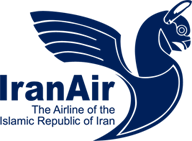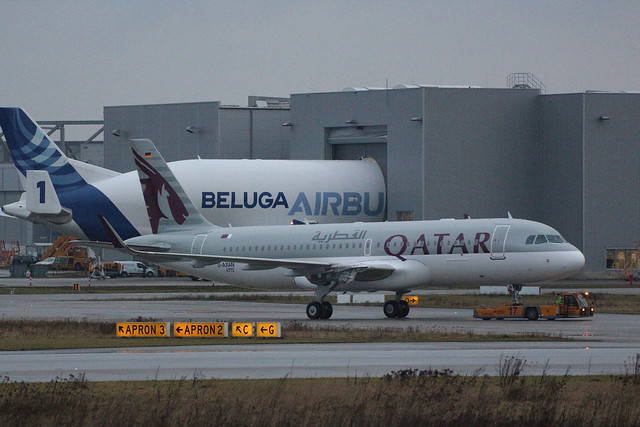Leeham News and Analysis
There's more to real news than a news release.
- “Rise and Fall of Boeing and the Way Back” picked by Royal Aeronautical Society as a top book for Christmas
- Merry Christmas and Happy New Year
- Mammoth files Motion to Dismiss Precision trade secret theft lawsuit
- Mitigating mounting pressures in the global supply chain
- Boeing seeks ICAO exemption for 777-200LRF to offset 777-8F delays, MD-11F grounding
Farnborough Air Show preview: expectations and possible surprises
 Subscription Required
Subscription Required
Introduction
July 4, 2016, © Leeham Co: The Farnborough Air Show begins next Monday and predictably, focus will be on orders.
With new airplanes from Airbus and Boeing past their development stages, conventional wisdom says there won’t be much new in this arena.
Don’t be so sure.
Bombardier is now on an upward trajectory, but don’t look for a big splash at #FIA16 (for those looking for this year’s Twitter handle). Embraer will have its E190-E2 at the show.
It’s Boeing’s 100th Anniversary and the company is rolling out the history for the show.
Summary
- No new products from Airbus.
- Boeing may have a surprise.
- Low number of orders anticipated.
Posted on July 4, 2016 by Scott Hamilton
Southwest’s MAX deferral
- Bloomberg News reports that Boeing is mulling a 777-10. We hinted at this last July with the large GE9X development. See our Paywall Farnborough preview this coming Monday for more information.
Subscription Required
Introduction

Southwest Airlines deferred 67 Boeing 737 MAX deliveries and some viewed this as a negative for the program. Photo via Google images.
June 29, 2016, © Leeham Co.: News last week that Southwest Airlines deferred 67 Boeing 737 MAX deliveries three year caused some to conclude that this is a harbinger of bad news for Boeing and the MAX program.
LNC disagrees with this conclusion.
Summary
- Southwest says it’s about not having a “subset” fleet of the 737 Classic when the MAX enters service.
- The airline also says it needs to spend more on technology, an area where WN has long lagged its competitors.
- Accelerated retirement of the 737-300/500 is a key reason for the fleet planning changes.
- Long-standing fatigue issues with the Classic remain a problem.
Posted on June 30, 2016 by Scott Hamilton
Analysts opine on Airbus, Boeing, Iran and Brexit
June 24, 2016: Brexit continues to creep into US analyst reports for the potential impact of companies doing business in the United Kingdom.
But there are other issues as well. Highlights this week:
- Spirit Aerosystem is a supplier to Airbus and Boeing. Deliveries to Airbus for the A350 continue despite program delays. Negotiations continue with Boeing over new contract terms. (Buckingham.)
- Don’t freak out over the Southwest Airlines deferral of Boeing 737 MAX. (Credit Suisse.)
- The Iran deal isn’t a big deal yet for Boeing. (Goldman Sachs.)
- Brexit may benefit B/E Aerospace. (JP Morgan.)
- US trans-Atlantic airlines likely will be hurt by Brexit but purely US domestic carriers are fine. (Morgan Stanley.)
Posted on June 29, 2016 by Scott Hamilton
Brexit special: analyst reaction
June 27, 2016: Aerospace and airline analysts are reacting to Thursday’s vote in Britain to leave the European Union. Below is a synopsis of some of the analyst notes we receive.
Credit Suisse
We are forwarding the analysis our European Transports team put out this morning on Brexit and have a few observations as it relates to US Airlines.
- GBP Exposure: For the US network carriers (UAL, DAL, AAL), GBP exposure averages ~2-3% of total revenues with overall UK exposed revenues ranging 4-6%.
- Impact to High Yield Transatlantic Traffic Primary Concern: For US network carriers, we see the primary concerns post-Brexit on the demand implications on the Transatlantic. Last week IAG issued a profit warning which worries us on corporate demand weakness. Given scheduled seat growth in the Transatlantic continues to outpace demand (H2 seat growth US-EU scheduled at 8.6%), capacity cuts are needed to stabilize pricing particularly since UK GDP is likely to slow even further. We look to Q2 earnings calls next month for additional color from carriers.
- AAL Viewed Most at Risk Given Partnership with IAG, but Our Team Believes IAG is Least at Risk [among EU airlines] from Future UK-EU Air Service Negotiations: Our European analyst believes IAG’s airlines would see limited effect from the UK exiting the EU Open Skies agreement as long as renegotiated UK-EU bilaterals do not limit service levels. This suggests that AAL’s relative underperformance was overdone on Friday; however, we expect Brexit-related uncertainty to continue to weigh on network carriers, and reiterate our confidence in domestic carriers (Outperform on LUV & SAVE).
Posted on June 27, 2016 by Scott Hamilton
Pontifications: Time to calm down from last week’s news cycle
June 27, 2016, © Leeham Co.: Last week turned out to be one of the busiest in aviation in quite some time.
- Details of the Iran Air Boeing “order” emerged. Everyone overlooks that this is really a “Memorandum of Agreement,” which is subject to who-knows-how-many contingencies.
- Frothing occurred over news that Volga Dnepr (Air Bridge Cargo) may firm up 10 orders for the 747-8F, an MOU announced at the Paris Air Show last year, at this year’s Farnborough Air Show. This, along with the Iran Air “deal,” was viewed as savior for the 777 Classic and 747-8 lines. Not so fast.
- Southwest Airlines announced it’s deferring 67 Boeing 737 MAX deliveries until well into the next decade. This prompted some to claim this is a harbinger of bad things to come for Boeing.
- Brexit was viewed as a disaster for the global economy, Airbus, Boeing, Europe’s airlines and all mankind.
As you can see from my sarcasm, I disagree with each of these. Here’s why.
Posted on June 27, 2016 by Scott Hamilton
Farnborough Air Show Preview: Orders aren’t the only thing to look for
Subscription Required
Introduction
June 27, 2016, © Leeham Co.: The Farnborough Air Show (FIA16) is closely watched for orders placed with Airbus, Boeing and to a much lesser extent, Bombardier and Embraer. Orders are the headline grabbers and are viewed as indicative to the health of commercial aviation going forward in the near- and mid-term.
But the consulting firm Accenture, in an interview with LNC says there are other benchmarks to watch for at FIA16.
Summary
- A large number of new entrants into aerospace is competing for engineering talent, and it’s not the conventional suspects.
- Execution will be of greater importance than new products.
- The ascent of disruptive technologies; and
- Doubling down on data deluge.
Posted on June 27, 2016 by Scott Hamilton
Iran Air, Volga Dnepr deals help Boeing production gaps but don’t solve them
Subscription Required
Introduction
 June 24, 2016, (c) Leeham Co.: Boeing’s recent deal with Iran Air for 100 737s, 777s and 747s and its indication that a Memorandum of Understanding with Volga Dnepr may be firmed up will help fill production gaps on the 777 Classic and 747-8 lines. But these transactions won’t fully fill the gaps.
June 24, 2016, (c) Leeham Co.: Boeing’s recent deal with Iran Air for 100 737s, 777s and 747s and its indication that a Memorandum of Understanding with Volga Dnepr may be firmed up will help fill production gaps on the 777 Classic and 747-8 lines. But these transactions won’t fully fill the gaps.
Boeing declined to detail the breakdown of its order–which is still subject to US government approval–but Reuters and The Wall Street Journal obtained the detailed list.
The Volga Dnepr MOU was announced last year at the Paris Air Show for up to 20 747-8Fs. This month, news emerged that this MOU appears to be firming up for 10 plus options or commitments. This contract may be announced at the Farnborough Air Show.
Summary
- Iran Air deal includes four 747-8s and 15 777-300ERs. Helpful, but not enough to fill the production gaps.
- Volga’s firming of 10 orders is helpful for the 747-8, but even at a reduced production rate of six airplanes per year, a significant gap remains.
Posted on June 24, 2016 by Scott Hamilton
Fuel prices rising, muted wide-body demand noted by analysts

Oil prices are rising and catching the attention of airline and aerospace analysts. Photo via Google images.
June 22, 2016: Our weekly synopsis of select analyst notes point to increasing fuel costs and weak wide-body demand, among other things, as issues to consider.
Highlights:
- A350 deliveries at risk due to Zodiac supplier issues. (Buckingham.)
- US airline stock is under pressure due to rising fuel prices. (Cowen & Co.)
- Stock for supplier Crane is rising due in part to rising oil prices. (CanaccordGenuity.)
- Global traffic growing at a slower rate than forecast. Wide-body demand muted. (JP Morgan.)
- Production rate increases at Boeing may be challenging. (Wells Fargo.)
Posted on June 22, 2016 by Scott Hamilton
Don’t look for defections to Boeing over Airbus delays
Subscription Required
Introduction
June 20, 2016, © Leeham Co.: Recent suggestions and threats that delays at Airbus for the A320neo and A350 means angry customers will flock to Boeing are naïve and grandstanding under the circumstances existing today.
The delays are measured in months, not years. For this reason, Boeing has no ability to fill the immediate needs of any competing airplane to the A320neo and A350.
Posted on June 20, 2016 by Scott Hamilton
Pontifications: Airbus CXLs A320, A350 August vacations
June 20, 2016, © Leeham Co.: Airbus officials canceled the annual August vacations in Europe for the A320 and A350 production lines.
The A320neo and A350-900 are backing up on the delivery lines because of supplier issues with the Pratt & Whitney GTF for the former and galley and lav issues from Zodiac for the latter.

Qatar Airways Airbus A320neo awaiting new-production Pratt & Whitney GTF engines with fixes incorporated. Photo via Google images.
The delays and issues are well documented in the press and for aerospace analysts.
“I cannot confirm that rumor for you,” an Airbus spokesman wrote LNC in an email. “I can tell you that we are putting in place extra resources to deliver on our 2016 commitments and objectives in terms of deliveries, but we are not going into detail on what that looks like at this stage.”
Posted on June 20, 2016 by Scott Hamilton
Airbus, Boeing, Bombardier, CSeries, Pontifications, Pratt & Whitney
737, 737 MAX, 737-7, 737-7.5, 777 Classic, 777X, A320NEO, A330, A350, A350-900, A380, Airbus, Boeing, Bombardier, CSeries, GTF, Pratt & Whitney, WestJet, Zodiac





